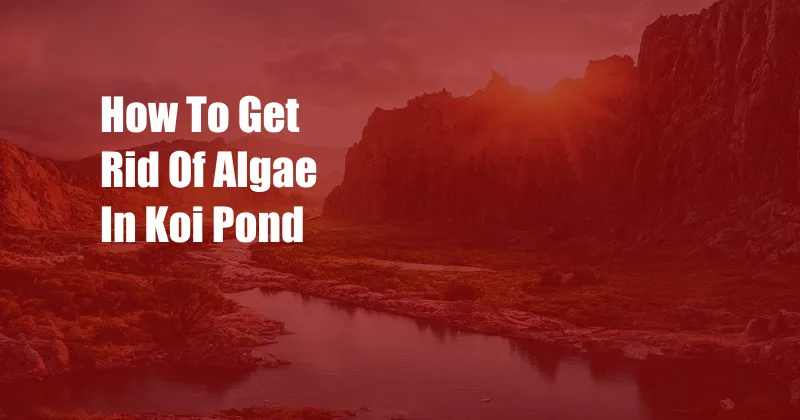
How to Eliminate Algae and Restore the Pristine Beauty of Your Koi Pond
The sight of algae clouding the once-pristine waters of my beloved koi pond filled me with dismay. Determined to restore its tranquility, I embarked on a journey to unravel the secrets of algae eradication and safeguard the health of my cherished fish.
Algae: A Nuisance in the Aquatic Paradise
Algae, a type of microscopic plant, thrive in nutrient-rich environments like koi ponds. While some algae growth is inevitable, excessive proliferation can mar the aesthetic appeal of the pond and compromise the well-being of its inhabitants. As algae multiply, they consume oxygen, making it difficult for koi to breathe. Additionally, algae can clog filters and pumps, disrupting the pond’s delicate ecosystem.
Combating the Algae Menace
Combating algae requires a comprehensive approach that addresses both the immediate issue and the underlying factors contributing to its growth.
1. Physical Removal: Use a pond vacuum to remove excess algae and debris from the pond. Agitate the water with a brush or fountain to dislodge algae from surfaces.
2. Nutrient Management: Algae feed on dissolved nutrients such as nitrates and phosphates. Reduce their levels by performing regular water changes and limiting overfeeding. Consider using a pond skimmer to remove surface debris and nutrients.
3. Biological Control: Introduce pond plants like water lilies and duckweed, which compete with algae for nutrients. Beneficial bacteria, available in commercial products, can also help break down organic matter and reduce algae growth.
4. Chemical Treatment: In severe cases, chemical treatments may be necessary. Algaecides are specifically designed to kill algae, but they should be used cautiously and according to the manufacturer’s instructions to avoid harming fish or beneficial organisms.
Keeping Algae at Bay: Prevention and Maintenance
Preventing algae requires diligence and maintaining a healthy pond ecosystem.
- Regular Cleaning: Perform weekly pond maintenance to remove debris and dead algae. Clean filters and pumps regularly to prevent nutrient buildup.
- Sunlight Control: Limit exposure to direct sunlight, as it promotes algae growth. Install shade plants or use floating shade devices.
- Aeration: Provide adequate aeration to ensure oxygen levels for koi and reduce algae production.
- Water Quality Monitoring: Regularly test pH, ammonia, nitrite, and nitrate levels to identify any imbalances that could contribute to algae growth.
Common Algae Queries
Q: What causes green algae in koi ponds?
A: Green algae thrive in warm, nutrient-rich water. Inadequate sunlight control and overfeeding can contribute to their proliferation.
Q: How do I get rid of black algae in my pond?
A: Black algae, often termed “black brush algae,” is a type of filamentous algae. To eliminate it, remove as much as possible manually. Use a pond vacuum to siphon out algae and perform water changes. Consider applying a chemical treatment specifically designed for black algae.
Q: Is algae harmful to fish?
A: Excessive algae growth can be detrimental to fish by reducing oxygen levels and consuming nutrients necessary for their health. Algae can also harbor harmful bacteria and parasites.
Conclusion
Maintaining a pristine koi pond free of algae requires a combination of physical removal, nutrient management, biological control, and chemical treatment when necessary. By following these steps and implementing regular maintenance practices, you can effectively eliminate algae and restore the tranquility and beauty of your aquatic haven.
Are you struggling with algae in your koi pond? Share your experiences and seek advice in the comments below. Together, we can create a thriving underwater ecosystem for our beloved fish.